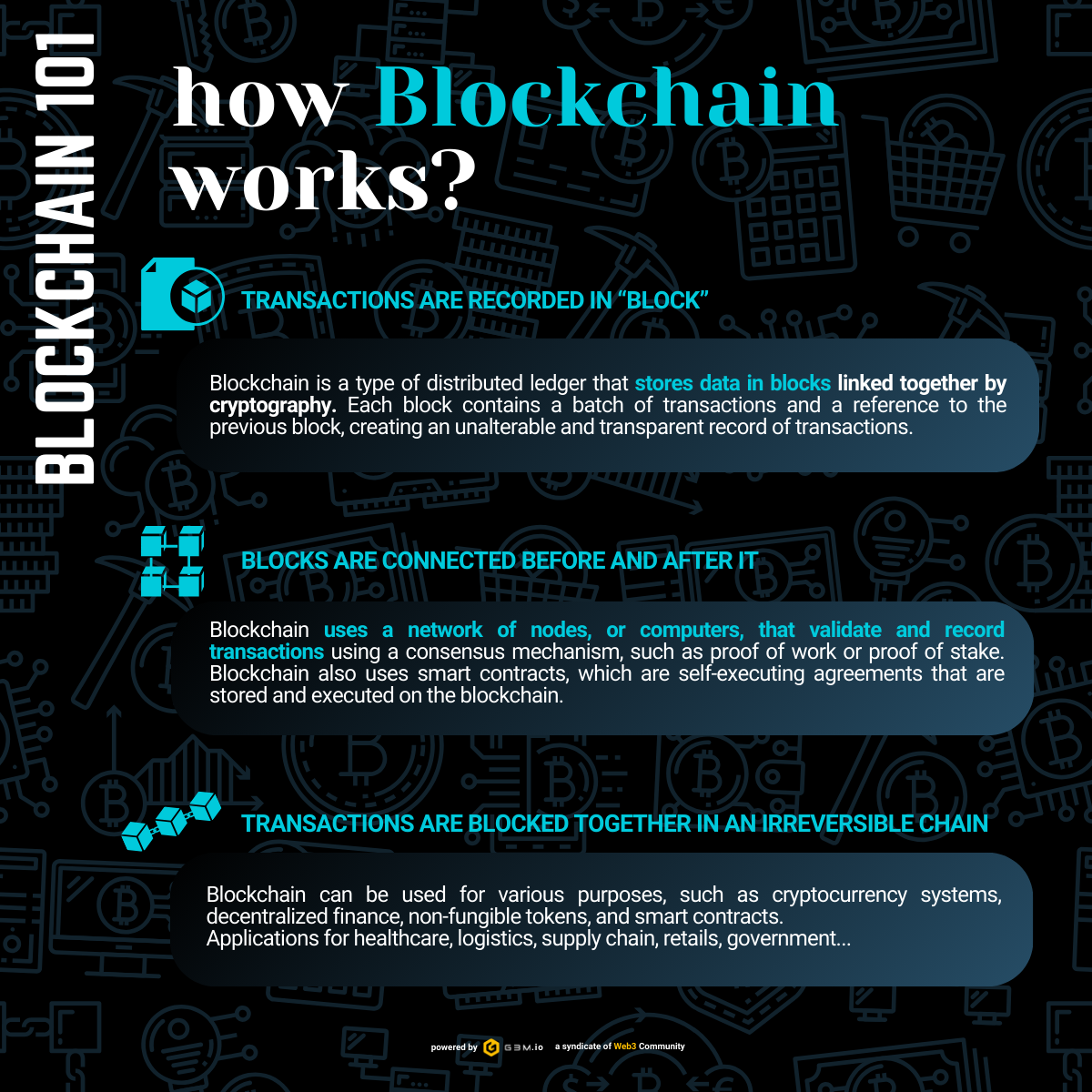How Blockchain Works?
3 min read - January 23 by Admin
Web3
Blockchain 101

Demystifying the Blockchain: Building Blocks of a Secure Future
Blockchain, the name often associated with #cryptocurrencies, has far-reaching applications beyond #Bitcoin. At its core, it's a powerful tool for data security and transparency, revolutionizing industries from finance to healthcare. But how does this technology work? Let's break it down into three simple steps:
1. Building Blocks: Recording Transactions in "Blocks"
Imagine a distributed network of computers, each acting as a validator. When a transaction occurs (whether it's sending money, transferring ownership, or executing a smart contract), it's bundled with other transactions into a "block." This block is then broadcasted to the network, where each node verifies its accuracy using a consensus mechanism like proof of work or proof of stake.
Think of it like a group audit, where everyone ensures the transaction is legitimate before adding it to the ledger. Once validated, the block is "sealed" with a unique digital signature and linked to the previous block in the chain. This creates a tamper-proof record of the transaction, visible to everyone on the network.
2. Chaining the Blocks: Building an Unbreakable Ledger
Each block, besides containing transactions, also holds a special code called a "hash." This hash acts like a fingerprint, uniquely identifying the block and its contents. More importantly, the hash of the previous block is embedded within each new block. This creates a secure chain, where altering any block would require changing all subsequent blocks – a near-impossible feat given the distributed nature of the network.
3. Securing the Chain: Locking Transactions in an Irreversible Chain
Once enough nodes validate a block, it's permanently added to the chain, becoming an inseparable part of the ledger. This "irreversible" aspect is crucial for security. Imagine trying to erase a page from a history book written on thousands of identical copies distributed across the globe. That's the level of immutability blockchain offers.
Beyond the Basics: Unlocking Blockchain's Potential
The applications of blockchain go far beyond cryptocurrencies. Its secure and transparent nature makes it ideal for various industries:
- Healthcare: Securely storing medical records, tracking pharmaceutical supply chains, and automating insurance claims.
- Logistics: Ensuring transparency in shipping and tracking goods, preventing counterfeiting, and optimizing delivery routes.
- Supply Chain: Tracing the origin of products, verifying ethical sourcing, and managing complex supply chains.
- Retail: Streamlining product authentication, managing loyalty programs, and enhancing customer trust.
- Government: Securely storing voting records, automating public services, and increasing transparency in governance.
These are just a few examples. As blockchain technology matures, we can expect even more innovative applications to emerge, shaping a future built on trust, security, and efficiency.
Trusted Sources to Dive Deeper:
World Economic Forum: https://www3.weforum.org/docs/WEF_Building-Blockchains.pdf
McKinsey & Company: https://www.mckinsey.com/industries/financial-services/our-insights/blockchain-and-digital-assets
Hyperledger:https://training.linuxfoundation.org/training/blockchain-for-business-an-introduction-to-hyperledger-technologies/
Blockchain may seem complex at first, but understanding its core principles – building blocks, chaining, and irreversibility – offers a glimpse into its transformative potential. With its ability to secure data, enhance transparency, and automate processes, blockchain is poised to revolutionize the way we interact, transact, and build trust in the digital world.
* #web3 * #blockchain * #crypto * #cryptocurrency * #decentralization * #defi * #nft * #metaverse * #web3investing * #web3incubation * #web3startup * #futureofweb3